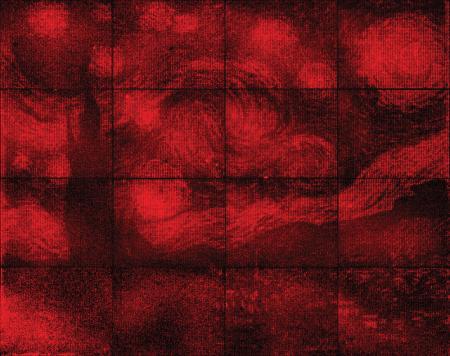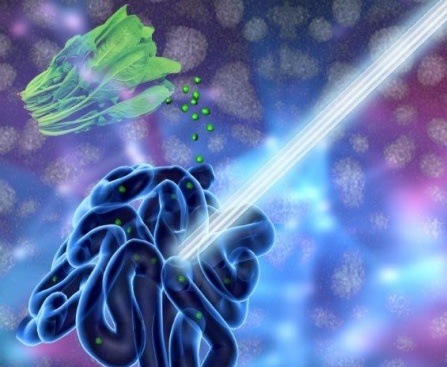I’ve waited a while before posting this piece in the hope that the situation would calm. Sadly, it took longer than hoped as there was an additional shooting incident of police officers in Baton Rouge on July 17, 2016. There’s more about that shooting in a July 18, 2016 news posting by Steve Visser for CNN.)
Finally: Robots, Dallas, ethics, and killing: In the wake of the Thursday, July 7, 2016 shooting in Dallas (Texas, US) and subsequent use of a robot armed with a bomb to kill the suspect, a discussion about ethics has been raised.
This discussion comes at a difficult period. In the same week as the targeted shooting of white police officers in Dallas, two African-American males were shot and killed in two apparently unprovoked shootings by police. The victims were Alton Sterling in Baton Rouge, Louisiana on Tuesday, July 5, 2016 and, Philando Castile in Minnesota on Wednesday, July 6, 2016. (There’s more detail about the shootings prior to Dallas in a July 7, 2016 news item on CNN.) The suspect in Dallas, Micah Xavier Johnson, a 25-year-old African-American male had served in the US Army Reserve and been deployed in Afghanistan (there’s more in a July 9, 2016 news item by Emily Shapiro, Julia Jacobo, and Stephanie Wash for abcnews.go.com). All of this has taken place within the context of a movement started in 2013 in the US, Black Lives Matter.
Getting back to robots, most of the material I’ve seen about ‘killing or killer’ robots has so far involved industrial accidents (very few to date) and ethical issues for self-driven cars (see a May 31, 2016 posting by Noah J. Goodall on the IEEE [Institute of Electrical and Electronics Engineers] Spectrum website).
The incident in Dallas is apparently the first time a US police organization has used a robot as a bomb, although it has been an occasional practice by US Armed Forces in combat situations. Rob Lever in a July 8, 2016 Agence France-Presse piece on phys.org focuses on the technology aspect,
The “bomb robot” killing of a suspected Dallas shooter may be the first lethal use of an automated device by American police, and underscores growing role of technology in law enforcement.
…
Regardless of the methods in Dallas, the use of robots is expected to grow, to handle potentially dangerous missions in law enforcement and the military.
…
Researchers at Florida International University meanwhile have been working on a TeleBot that would allow disabled police officers to control a humanoid robot.
The robot, described in some reports as similar to the “RoboCop” in films from 1987 and 2014, was designed “to look intimidating and authoritative enough for citizens to obey the commands,” but with a “friendly appearance” that makes it “approachable to citizens of all ages,” according to a research paper.
Robot developers downplay the potential for the use of automated lethal force by the devices, but some analysts say debate on this is needed, both for policing and the military.
A July 9, 2016 Associated Press piece by Michael Liedtke and Bree Fowler on phys.org focuses more closely on ethical issues raised by the Dallas incident,
When Dallas police used a bomb-carrying robot to kill a sniper, they also kicked off an ethical debate about technology’s use as a crime-fighting weapon.
…
The strategy opens a new chapter in the escalating use of remote and semi-autonomous devices to fight crime and protect lives. It also raises new questions over when it’s appropriate to dispatch a robot to kill dangerous suspects instead of continuing to negotiate their surrender.
“If lethally equipped robots can be used in this situation, when else can they be used?” says Elizabeth Joh, a University of California at Davis law professor who has followed U.S. law enforcement’s use of technology. “Extreme emergencies shouldn’t define the scope of more ordinary situations where police may want to use robots that are capable of harm.”
In approaching the question about the ethics, Mike Masnick’s July 8, 2016 posting on Techdirt provides a surprisingly sympathetic reading for the Dallas Police Department’s actions, as well as, asking some provocative questions about how robots might be better employed by police organizations (Note: Links have been removed),
The Dallas Police have a long history of engaging in community policing designed to de-escalate situations, rather than encourage antagonism between police and the community, have been handling all of this with astounding restraint, frankly. Many other police departments would be lashing out, and yet the Dallas Police Dept, while obviously grieving for a horrible situation, appear to be handling this tragic situation professionally. And it appears that they did everything they could in a reasonable manner. They first tried to negotiate with Johnson, but after that failed and they feared more lives would be lost, they went with the robot + bomb option. And, obviously, considering he had already shot many police officers, I don’t think anyone would question the police justification if they had shot Johnson.
But, still, at the very least, the whole situation raises a lot of questions about the legality of police using a bomb offensively to blow someone up. And, it raises some serious questions about how other police departments might use this kind of technology in the future. The situation here appears to be one where people reasonably concluded that this was the most effective way to stop further bloodshed. And this is a police department with a strong track record of reasonable behavior. But what about other police departments where they don’t have that kind of history? What are the protocols for sending in a robot or drone to kill someone? Are there any rules at all?
Furthermore, it actually makes you wonder, why isn’t there a focus on using robots to de-escalate these situations? What if, instead of buying military surplus bomb robots, there were robots being designed to disarm a shooter, or detain him in a manner that would make it easier for the police to capture him alive? Why should the focus of remote robotic devices be to kill him? This isn’t faulting the Dallas Police Department for its actions last night. But, rather, if we’re going to enter the age of robocop, shouldn’t we be looking for ways to use such robotic devices in a manner that would help capture suspects alive, rather than dead?
Gordon Corera’s July 12, 2016 article on the BBC’s (British Broadcasting Corporation) news website provides an overview of the use of automation and of ‘killing/killer robots’,
Remote killing is not new in warfare. Technology has always been driven by military application, including allowing killing to be carried out at distance – prior examples might be the introduction of the longbow by the English at Crecy in 1346, then later the Nazi V1 and V2 rockets.
More recently, unmanned aerial vehicles (UAVs) or drones such as the Predator and the Reaper have been used by the US outside of traditional military battlefields.
Since 2009, the official US estimate is that about 2,500 “combatants” have been killed in 473 strikes, along with perhaps more than 100 non-combatants. Critics dispute those figures as being too low.
Back in 2008, I visited the Creech Air Force Base in the Nevada desert, where drones are flown from.
During our visit, the British pilots from the RAF deployed their weapons for the first time.
One of the pilots visibly bristled when I asked him if it ever felt like playing a video game – a question that many ask.
…
The military uses encrypted channels to control its ordnance disposal robots, but – as any hacker will tell you – there is almost always a flaw somewhere that a determined opponent can find and exploit.
We have already seen cars being taken control of remotely while people are driving them, and the nightmare of the future might be someone taking control of a robot and sending a weapon in the wrong direction.
The military is at the cutting edge of developing robotics, but domestic policing is also a different context in which greater separation from the community being policed risks compounding problems.
The balance between risks and benefits of robots, remote control and automation remain unclear.
But Dallas suggests that the future may be creeping up on us faster than we can debate it.
The excerpts here do not do justice to the articles, if you’re interested in this topic and have the time, I encourage you to read all the articles cited here in their entirety.
*(ETA: July 25, 2016 at 1405 hours PDT: There is a July 25, 2016 essay by Carrie Sheffield for Salon.com which may provide some insight into the Black Lives matter movement and some of the generational issues within the US African-American community as revealed by the movement.)*


